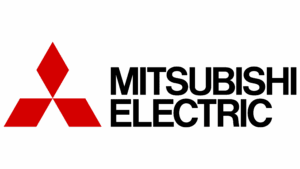In the fast-paced world we live in, efficiency and comfort are two qualities that everyone seeks out in their daily lives. When it comes to heating systems, the demand for both efficiency and comfort has led to the rise in popularity of mini split heating systems. These systems, offered by Stay Cool HVAC in Florida, combine both efficiency and comfort to provide year-round climate control for homes and businesses. Whether you’re looking for a system that is energy efficient or one that provides optimal comfort, mini split heating systems offer the perfect balance of both.
What are Mini Split Heating Systems?
Definition and Overview
Mini split heating systems, also known as ductless heating systems, are a type of HVAC system that provides both heating and cooling capabilities. They consist of two main components: an indoor unit and an outdoor unit. These units are connected by refrigerant lines and are designed to provide efficient and targeted heating or cooling to specific zones or rooms in a building.
How do Mini Split Heating Systems Work?
Mini split heating systems work by extracting heat from the outdoor air and transferring it indoors to provide heating. They do not rely on a traditional ductwork system to distribute air, which makes them a popular choice for retrofitting older homes or buildings that do not have existing ductwork. The outdoor unit houses the compressor and condenser, which extract and compress the heat from the outdoor air. The indoor unit, usually mounted on a wall or ceiling, releases the heated air into the room. These units are controlled by a thermostat and can be adjusted to maintain a specific temperature in each zone or room.
Advantages of Mini Split Heating Systems
Energy Efficiency
One of the main advantages of mini split heating systems is their energy efficiency. Unlike traditional HVAC systems, which can experience significant energy losses through ductwork, mini split systems deliver heat directly to the desired areas, resulting in less energy waste. Additionally, mini split systems often utilize inverter technology, which allows for variable speed operation, adjusting the compressor speed to match the heating or cooling needs of the space. This leads to reduced energy consumption and lower utility bills.
Zoning Capabilities
Mini split heating systems offer the flexibility of zoning capabilities, which allow for personalized comfort in different areas of a building. With individual thermostats controlling each indoor unit, occupants can adjust the temperature of specific zones or rooms to their preferences. This not only provides greater comfort but also allows for energy savings by avoiding the need to heat or cool areas that are not in use.
Easy Installation
Installation of a mini split heating system is typically easier and less disruptive compared to traditional HVAC systems. The absence of ductwork eliminates the need for extensive renovations or modifications to accommodate bulky ducts. Additionally, outdoor and indoor units are connected by refrigerant lines, which require only a small hole in the wall for installation. This simplified installation process often results in shorter project timelines and reduced labor costs.
Improved Indoor Air Quality
Mini split heating systems contribute to improved indoor air quality in several ways. Firstly, the absence of ductwork eliminates the potential for dust, allergens, and other contaminants to accumulate and circulate throughout the building. Secondly, many mini split systems are equipped with multi-stage filtration, which effectively removes airborne pollutants such as dust, pollen, and mold spores. This can greatly benefit individuals with respiratory conditions or allergies, as well as create a healthier indoor environment overall.
Flexible Placement Options
Another advantage of mini split heating systems is the flexibility of placement options for the indoor units. These units can be mounted on walls, ceilings, or even recessed into the structure, allowing for seamless integration with the existing decor. This versatility not only maximizes comfort but also minimizes the visual impact of the system, making it an attractive choice for both residential and commercial applications.
Factors to Consider when Choosing a Mini Split Heating System
Heating and Cooling Capacity
When selecting a mini split heating system, it is essential to consider the heating and cooling capacity required to adequately heat or cool the desired areas. This is determined by factors such as the size of the room, insulation levels, and the climate in which the system will be used. It is important to choose a system that can efficiently meet the heating and cooling demands of the space to ensure optimal comfort.
Energy Efficiency Rating
To assess the energy efficiency of a mini split heating system, it is recommended to look for systems with high Seasonal Energy Efficiency Ratio (SEER) and Heating Seasonal Performance Factor (HSPF) ratings. Higher ratings indicate better energy efficiency and can result in lower operating costs.
Noise Levels
While mini split heating systems are generally quieter than traditional HVAC systems, it is still important to consider the noise levels produced by the system. Some systems are designed to operate silently or have noise reduction features, making them suitable for bedrooms or areas that require minimal noise disruption.
Reliability and Durability
Choosing a reputable brand and model with a proven track record of reliability and durability is crucial when investing in a mini split heating system. The system should be built to withstand the demands of daily use and continue to operate efficiently for many years with minimal maintenance.
Installation Requirements
Before purchasing a mini split heating system, it is important to consider the installation requirements. This includes the need for professional installation, the availability of suitable electrical connections and refrigerant lines, and any necessary modifications to the building structure. Consulting with an HVAC professional can provide valuable insight and ensure the system is compatible with the intended installation location.
Steps to Install a Mini Split Heating System
Determining System Size and Layout
To begin the installation process, it is essential to determine the appropriate system size and layout for the building or area. Factors such as the square footage, insulation levels, and desired number of zones will influence the selection of indoor and outdoor units.
Selecting Indoor and Outdoor Units
Once the system requirements are determined, the next step is to select the appropriate indoor and outdoor units. This involves considering factors such as the desired heating and cooling capacity, the number of zones or rooms to be heated or cooled, and the placement options available within the building.
Installation of Indoor and Outdoor Units
The installation process begins with mounting the indoor units in the selected locations. The units are securely attached to the wall or ceiling, ensuring proper support and stability. The outdoor unit is typically installed on a stable surface, such as a concrete pad or metal brackets, in an area with proper airflow to facilitate efficient operation.
Connecting Refrigerant Lines and Electrical Wiring
Once the units are in place, the refrigerant lines and electrical wiring are connected. This requires running the lines and wires through the designated holes in the wall, ensuring proper insulation and protection against any potential leaks or damage.
Testing and Commissioning the System
After the units are installed and connected, it is important to test the system thoroughly to ensure proper functionality and performance. This includes checking for any refrigerant leaks, verifying the electrical connections, and verifying that all components are operating as intended. Once the system passes the testing phase, it can be commissioned and ready for use.
Maintenance and Care for Mini Split Heating Systems
Cleaning and Changing Air Filters
Regular cleaning and changing of air filters is crucial for maintaining the efficiency and performance of a mini split heating system. Clogged or dirty filters can restrict airflow and reduce the system’s ability to heat or cool effectively. Cleaning or replacing the filters on a monthly or quarterly basis is recommended, depending on the level of use and air quality.
Inspecting and Cleaning Indoor and Outdoor Units
Periodically inspecting and cleaning the indoor and outdoor units is important for ensuring proper operation and extending the lifespan of the system. Dust, debris, and other contaminants can accumulate on the units, hindering their performance and potentially leading to malfunctions. Cleaning the units with a soft brush or cloth and removing any debris from the surrounding areas can help maintain optimal efficiency.
Checking and Maintaining Refrigerant Levels
Maintaining the proper refrigerant levels is essential for the efficient operation of a mini split heating system. If the system is low on refrigerant, it can result in decreased performance and potentially cause damage to the compressor. Regular inspections by a qualified HVAC professional can help identify any leaks or issues with the refrigerant levels and address them promptly.
Ensuring Proper Airflow
To maintain optimal operation, it is important to ensure proper airflow in the areas being heated or cooled. This includes checking for any obstructions near the indoor units and ensuring that vents and registers are not blocked by furniture or other objects. Maximizing airflow helps the system distribute heat or cool air evenly and efficiently throughout the space.
Scheduling Professional Maintenance
While some maintenance tasks can be performed by the homeowner, it is recommended to schedule professional maintenance at least once a year. A qualified HVAC technician can perform a comprehensive inspection, clean and lubricate components, check electrical connections, and address any potential issues or concerns. Regular professional maintenance can help keep the system running smoothly and potentially prevent costly repairs or breakdowns.
Common Issues and Troubleshooting for Mini Split Heating Systems
Inadequate Heating or Cooling
If a mini split heating system fails to provide adequate heating or cooling, several factors could be to blame. It is important to check for any obstructions near the indoor units, ensure proper airflow, and verify that the thermostat settings are correct. Additionally, low refrigerant levels, a dirty filter, or a malfunctioning component may be contributing to the problem, requiring professional assistance to diagnose and resolve the issue.
Refrigerant Leaks
Refrigerant leaks can significantly impact the performance and efficiency of a mini split heating system. Signs of a refrigerant leak may include reduced cooling or heating capacity, ice buildup on the evaporator coil, or hissing sounds near the indoor or outdoor units. If a leak is suspected, it is important to contact an HVAC professional to identify and repair the leak, as well as recharge the refrigerant.
Frozen Coils
Frozen coils can occur due to restricted airflow, low refrigerant levels, or other issues with the system. If the indoor unit’s coil freezes, it can prevent the system from effectively heating or cooling the space. Turning off the system, allowing the coil to thaw, and addressing any underlying issues can help resolve this problem. If the issue persists, it is recommended to consult with an HVAC professional for further inspection and repair.
Airflow Problems
Poor airflow can result in uneven heating or cooling and decreased system performance. This can be caused by clogged air filters, dirty coils, or obstructions near the indoor or outdoor units. Checking and cleaning the air filters, coils, and ensuring unrestricted airflow can help alleviate this problem. If the issue persists, it may be necessary to consult with a professional HVAC technician.
Thermostat Malfunctions
Thermostat malfunctions can cause inaccurate temperature readings, improper system operation, or a complete system failure. Checking the thermostat settings, replacing batteries if necessary, and ensuring proper wiring connections can help troubleshoot simple thermostat issues. If the problem persists, it may be necessary to replace or repair the thermostat with the assistance of a professional HVAC technician.
Tips for Improving Efficiency and Comfort with Mini Split Heating Systems
Optimize Thermostat Settings
To maximize energy savings and comfort, it is recommended to set the thermostat to the desired temperature for each zone or room. Avoid setting the system to extreme temperatures, as this can increase energy consumption and put unnecessary strain on the system.
Use Zoning Features Wisely
Take advantage of the zoning capabilities of a mini split heating system by adjusting the temperature settings for specific areas or rooms. This allows for personalized comfort while avoiding the need to heat or cool unoccupied spaces.
Maintain Proper Insulation
Proper insulation plays a crucial role in the energy efficiency and performance of a mini split heating system. Ensure that the building or area is adequately insulated, including walls, ceilings, and windows, to minimize heat loss or gain and maximize comfort.
Regularly Clean Air Filters
Frequently cleaning or replacing air filters helps maintain optimal airflow and ensures efficient operation of the mini split heating system. Clogged or dirty filters can restrict airflow and strain the system, resulting in decreased performance and potential issues.
Consider Supplemental Heating Options
In extremely cold climates or areas with poor insulation, it may be necessary to consider supplemental heating options to supplement the mini split heating system. This can include using portable heaters or installing radiant heating systems in specific areas to provide additional warmth when needed.
Comparison between Mini Split Heating Systems and Other Heating Options
Central Heating Systems
Compared to central heating systems, mini split heating systems offer increased energy efficiency, zoning capabilities, and easier installation. Central heating systems rely on ductwork, which can result in energy losses and may not provide the same level of comfort and control as mini splits.
Window Air Conditioners
While both mini split heating systems and window air conditioners provide heating and cooling capabilities, mini splits are generally more energy-efficient, quieter, and offer more precise temperature control. Window air conditioners are limited in their capacity and are not suitable for heating larger spaces or multiple zones.
Traditional Split Systems
Traditional split systems, similar to mini split systems, consist of an indoor and outdoor unit. However, traditional split systems require extensive ductwork, making them less suitable for retrofitting older homes or buildings. Mini splits, on the other hand, offer greater flexibility and energy efficiency, especially for smaller spaces or individual zones.
Radiant Heating Systems
Radiant heating systems, such as underfloor or wall-mounted radiators, provide heat through thermal radiation. While they offer comfortable heating, they lack the cooling capabilities of mini split systems. Additionally, radiant heating systems can be costly to install and may not be as energy-efficient as mini split systems.
Heat Pumps
Mini split heating systems can also function as heat pumps, offering both heating and cooling capabilities. Heat pumps, similar to mini splits, extract heat from the outdoor air to provide warmth indoors. However, heat pumps often rely on ductwork, which can result in energy losses, while mini splits offer the advantages of ductless operation.
Cost Considerations for Mini Split Heating Systems
Initial Purchase and Installation Costs
The initial purchase and installation costs of a mini split heating system can vary depending on factors such as the brand, model, capacity, and installation requirements. While mini split systems may have a higher upfront cost compared to certain heating options, the potential energy savings, rebates, and long-term benefits can outweigh the initial investment.
Operating and Energy Costs
Mini split heating systems are known for their energy efficiency, which can result in lower operating and energy costs compared to traditional HVAC systems. By delivering heat directly to the desired areas and avoiding energy losses through ductwork, mini splits can provide significant cost savings over time.
Long-Term Savings and Return on Investment
Although mini split heating systems may have a higher initial cost, the long-term savings and return on investment can be substantial. The energy efficiency and zoned heating capabilities of mini splits can result in lower utility bills, reduced maintenance costs, and increased comfort, making them a cost-effective choice in the long run.
Potential Tax Credits and Incentives
Depending on the region and local regulations, there may be potential tax credits, incentives, or rebates available for installing energy-efficient heating systems such as mini splits. These financial incentives can help offset the initial purchase and installation costs, making mini split systems even more attractive from a cost perspective.
Financing Options
For those concerned about the upfront cost of a mini split heating system, financing options may be available. Many manufacturers and HVAC contractors offer financing programs that allow homeowners to spread out the cost of the system over time, making it more affordable and accessible.
Conclusion
Mini split heating systems offer a range of benefits in terms of energy efficiency, comfort, and flexibility. By providing targeted heating or cooling to specific zones or rooms, mini splits optimize energy usage and offer personalized comfort. With easy installation, improved indoor air quality, and a variety of placement options, mini split heating systems provide an attractive alternative to traditional HVAC systems. By considering factors such as heating and cooling capacity, energy efficiency, and maintenance requirements, homeowners can make informed decisions when selecting and maintaining a mini split heating system. With proper care and upkeep, these systems can provide efficient and reliable heating for many years to come.



